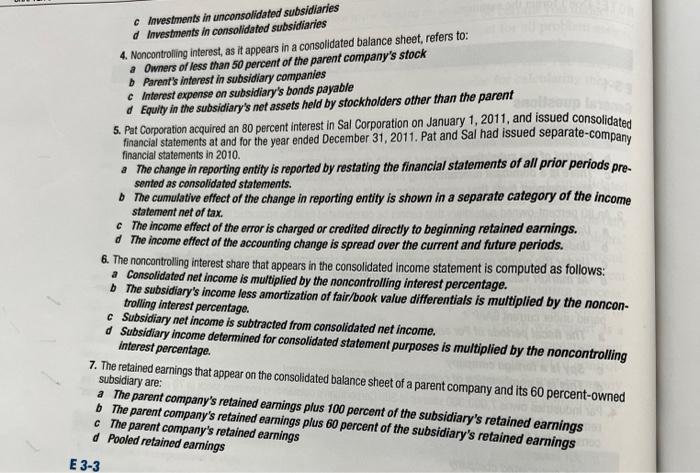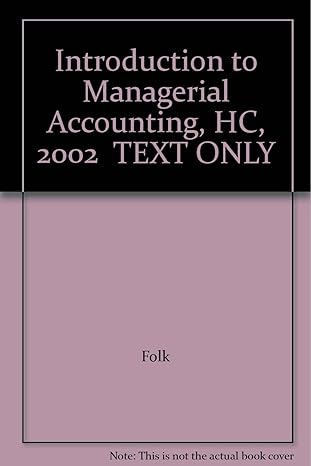Investments in unconsolidated subsidiaries Investments in consolidated subsidiaries 4. Noncontrolling Interest, as it appears in a consolidated balance sheet, refers to: Owners of less than 50 percent of the parent company's stock Parent's interest in subsidiary companies c Interest expense on subsidiary's bonds payable Equity in the subsidiary's net assets held by stockholders other than the parent 5. Pat Corporation acquired an 80 percent interest in Sal Corporation on January 1, 2011, and issued consolidated financial statements at and for the year ended December 31, 2011. Pat and Sal had issued separate-company financial statements in 2010. * The change in reporting entity is reported by restating the financial statements of all prior periods pre- sented as consolidated statements. The cumulative effect of the change in reporting entity is shown in a separate category of the income statement net of tax. c The income effect of the error is charged or credited directly to beginning retained earnings. The income effect of the accounting change is spread over the current and future periods. 6. The noncontrolling interest share that appears in the consolidated income statement is computed as follows: a Consolidated net income is multiplied by the noncontrolling interest percentage. The subsidiary's income less amortization of fair/book value differentials is multiplied by the noncon- trolling interest percentage. c Subsidiary net income is subtracted from consolidated net income. d Subsidiary income determined for consolidated statement purposes is multiplied by the noncontrolling interest percentage. 7. The retained earnings that appear on the consolidated balance sheet of a parent company and its 60 percent-owned subsidiary are: a The parent company's retained earnings plus 100 percent of the subsidiary's retained earnings The parent company's retained earnings plus 60 percent of the subsidiary's retained earnings c The parent company's retained earnings d Pooled retained earnings E 3-3 E 3-2 General questions 1. Under GAAP, a parent company should exclude a subsidiary from consolidation it: a It measures income from the subsidiary under the equity method The subsidiary is in a regulated industry The subsidiary is a foreign entity whose books are recorded in a foreign currency The parent and the subsidiary are under common control 2. The FASB's primary motivation for requiring consolidation of all majority-owned subsidiaries was to: Ensure disclosure of all loss contingencies Prevent the use of off-balance sheet financing c Improve comparability of the statements of cash flows d Establish criteria for exclusion of finance and Insurance subsidiaries from consolidation 3. Parent company and consolidated financial statement amounts would not be the same for: # Capital stock Retained earnings








